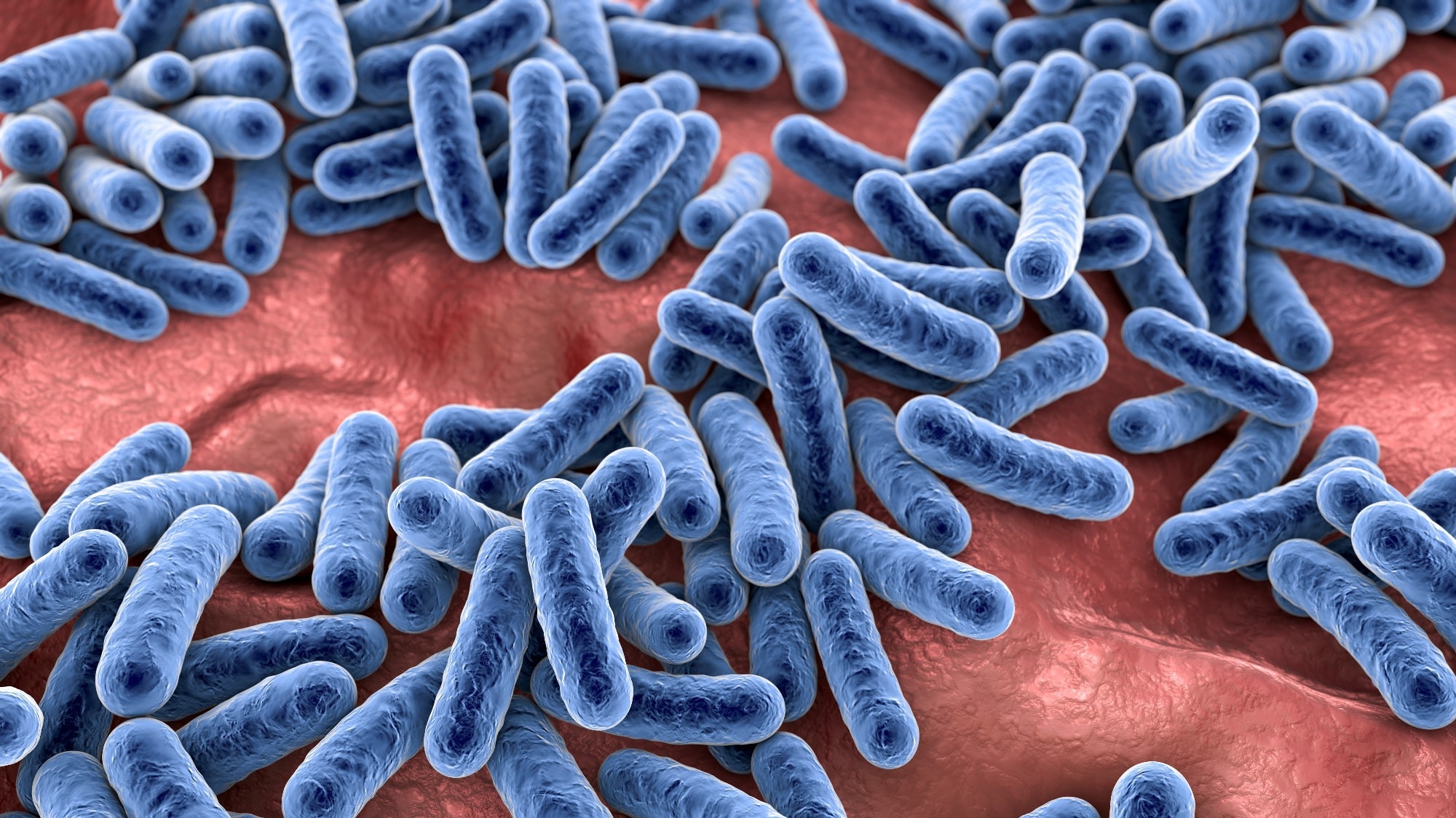A latest research printed within the journal Nature Microbiology confirmed that exoglycosidases from Akkermansia muciniphila, a intestine symbiont, can goal (prolonged) blood group antigens to provide ABO-universal blood.
Matching blood teams of donors and recipients primarily based on pink blood cell (RBC) antigens and plasma antibodies is important to forestall deadly hemolytic reactions. A common O-blood group stock might scale back the outdating of blood items, handle blood shortages, and get rid of ABO-dependent adversarial occasions.
The conversion of group A or B RBCs to group O (enzyme-converted O [ECO]) was pioneered utilizing espresso bean α-galactosidase in 1982. Additional, mining a intestine microbiota library revealed a sequential deacetylase/α-galactosaminidase system for A antigen conversion. Blood group A consists of two subtypes (A1 and A2), with significantly greater antigen ranges with the A1 subtype in comparison with A2.
The A antigens could be prolonged to yield galactose (Gal)-A and H sort 3 constructions. Further extension of H sort 3 yields A kind 3 antigen. Apart from, an prolonged B antigen (ExtB) was reported in 2019. The relevance of prolonged antigens for ECO blood compatibility is unknown, with no out there exoglycosidases focusing on the extensions.
 Examine: Akkermansia muciniphila exoglycosidases goal prolonged blood group antigens to generate ABO-universal blood. Picture Credit score: Kateryna Kon / Shutterstock
Examine: Akkermansia muciniphila exoglycosidases goal prolonged blood group antigens to generate ABO-universal blood. Picture Credit score: Kateryna Kon / Shutterstock
The research and findings
Within the current research, researchers confirmed that A. muciniphila exoglycosidases work effectively towards blood group antigens to generate the ABO common blood group. First, they chose candidate enzymes from A. muciniphila to take away the B antigen. Candidates from the glycoside hydrolase households 27 (GH27), 36 (GH36) and 110 (GH110) included AmGH27, AmGH36A–C, and AmGH110A.
The α-galactosidase exercise was established for AmGH36C, AmGH110A, and AmGH27. AmGH110A confirmed exercise towards the B sort 2 hexasaccharide. Subsequent, the staff assessed the B antigen conversion on RBCs by AmGH36C, AmGH110A, AmGH27, or AmGH36A within the conversion buffer (composed of glycine and sodium chloride).
Subsequently, B antigen ranges had been analyzed by immunostaining. Solely AmGH110A remedy depleted B antigens to the degrees in detrimental controls. Notably, AmGH110A’s effectivity dropped by 50% in phosphate-buffered saline (PBS) in comparison with the conversion buffer. Subsequent, the staff assayed ExtB elimination by AmGH20A–Ok and located that solely AmGH20I, AmGH20A, and AmGH20C had eliminated ExtB.
Furthermore, at decrease doses, AmGH20C was probably the most environment friendly, adopted by AmGH20A; notably, these two didn’t take away ExtB in PBS. Due to this fact, the staff explored how ExtB influences B-antigen elimination. Whereas AmGH110A remedy depleted B antigens, it was hindered by N-acetyl-galactosamine capping in ExtB.
Thus, a one-pot or sequential remedy with AmGH110A and AmGH20A was important for depleting B and ExtB antigens. Subsequent, the researchers chosen two GH109, i.e., AmGH109A and AmGH109B, for changing A and A kind 3 antigens. Apart from, AmGH36A was chosen. AmGH36A and AmGH109A/B had been examined on A1 and A2 RBCs from three donors within the conversion buffer.
AmGH109A exhibited the bottom exercise, whereas AmGH36A was superior. Notably, the 2 high performers had greater effectivity in conversion buffer than in PBS. Further experiments indicated that AmGH36A was adequate to transform A antigens inside half-hour absolutely. Notably, A kind 3 antigen was transformed by AmGH36A solely. The staff chosen AmGH95B and α-1,2-fucosidase (RiFuc95) to transform H sort 3 antigens and A1 secretor RBCs.
AmGH95B was terribly environment friendly on H sort 3, whereas the opposite enzyme was inactive. AmGH95B was additionally environment friendly towards non-secretor RBCs; it was superior in conversion buffer and PBS, whereas the opposite enzyme most well-liked PBS. Amongst β-1,3-galactosidases, solely AmGH35A eliminated Gal-A on A1 RBCs. Exposing the Gal-A construction by cotreating with AmGH95B and AmGH36A revealed compelling exercise by AmGH35A.
Sequential treating A1 RBCs with AmGH36A, AmGH95B, and AmGH35A uncovered further A epitopes, warranting a second AmGH36A remedy to provide A-negative RBCs. Additional, the staff discovered that eradicating each B and ExtB antigens from donor RBCs considerably diminished the imply reactivity with group O plasmas.
Likewise, depleting each A and prolonged A antigens considerably elevated compatibility in comparison with eradicating the A antigen alone. Lastly, structural analyses of AmGH20A and AmGH110A revealed a beforehand unknown carbohydrate-binding module (CBM)-like area in AmGH20A. This area was structurally distinctive, sharing solely 8% sequence id with the highest structural homolog.
Conclusions
Taken collectively, the research found enzymes that convert prolonged blood group antigens. Conversion occurred on the highest RBC ranges (hematocrit: 38%), shortest time (half-hour), and lowest temperature. The staff estimated that 18 mg and eight mg of enzymes can be required to transform one unit or 200 ml of A and B RBCs, respectively. Total, these findings might result in rational engineering of stronger enzymes to enhance the feasibility and security of ECO RBCs.
How a intestine micro organism might make blood of every kind common, radically altering transfusion drugshttps://t.co/vh63tFzH2Rhttps://t.co/F5lZXwrrhw@NatureMicrobiol pic.twitter.com/KDRTC4spPk
— Eric Topol (@EricTopol) April 30, 2024
Journal reference:
- Jensen M, Stenfelt L, Ricci Hagman J, et al. Akkermansia muciniphila exoglycosidases goal prolonged blood group antigens to generate ABO-universal blood. Nat Microbiol, 2024, DOI: 10.1038/s41564-024-01663-4, https://www.nature.com/articles/s41564-024-01663-4
